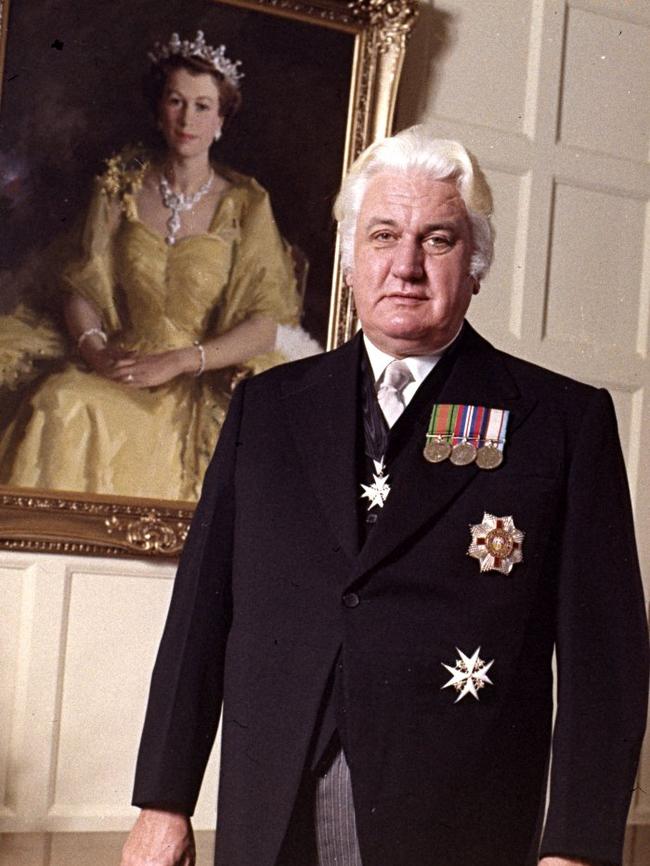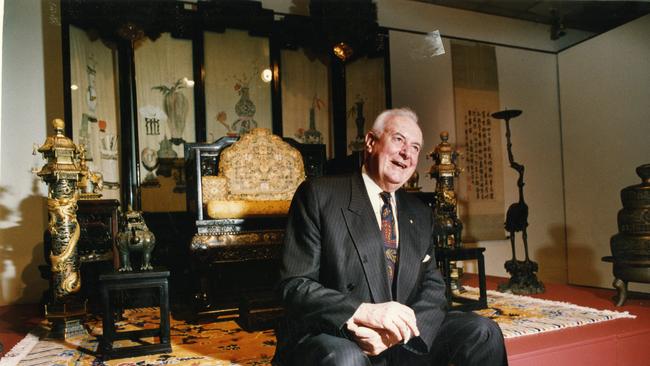Governor-General Sir John Kerr never informed Buckingham Palace ahead of Gough Whitlam dismissal
The long-awaited release of the Palace Letters appears to exonerate the Queen of any involvement in Australia’s greatest constitutional crisis - the sacking of Prime Minister Gough Whitlam by the Governor-General Sir John Kerr on November 11, 1975.
NSW
Don't miss out on the headlines from NSW. Followed categories will be added to My News.
The long-awaited release of the Palace Letters appears to exonerate the Queen of any involvement in Australia’s greatest constitutional crisis - the sacking of Prime Minister Gough Whitlam by the Governor-General Sir John Kerr on November 11, 1975.
The historic letters released this morning by the National Archives show that the Queen was aware of Australia’s political crisis as Whitlam was deadlocked with the senate over passage of his budget, raising the prospect of the government going into financial default.
But on paper it appears that Kerr, who stood down in 1977, told the truth when he claims he had not told her about his plans to dismiss Whitlam beforehand because he wanted to keep her out of the political dispute.
The letters released so far show that on November 5, the Queen’s private secretary Martin Charteris wrote that Kerr, who was later knighted, was in an “unenviable” position but that the Palace was confident he would not do the monarchy any harm in the course of action he chose.

However, Sir Martin made it clear that it was not for the Queen to intervene and it was a matter for Australia to resolve.
On the day of the dismissal, Sir John Kerr informed Buckingham Palace he had sacked Whitlam and wrote: “I should say I decided to take the step I took without informing the palace in advance because, under the Constitution, the responsibility is mine, and I was of the opinion it was better for Her Majesty not to know in advance, though it is of course my duty to tell her immediately”.
His letter attached the letter of dismissal he gave to Whitlam on the day, a legal opinion from high court chief justice, Garfield Barwick, and a letter from the opposition leader, Malcolm Fraser, written to Kerr at Kerr’s request.
Fraser was appointed caretaker prime minister and later won a landslide election.

On November 20, Kerr wrote that he had not tell Whitlam in advance of his plans - because he didn’t want the Prime Minister to get in first and ask him to dismiss the governor-general.
“If in the period of 24 hours in which he [Whitlam] was considering his position he advised the Queen that I should be immediately dismissed, the position would then have been that either I would be, in fact, trying to dismiss him while he was trying to dismiss me – an impossible position for the Queen,” Kerr wrote.
“I simply could not risk the outcome for the sake of the monarchy.”
It has also been revealed that Kerr had discussed his dilemma with Prince Charles during a royal visit to PNG in September.
On October 2, Charteris wrote to Kerr: “Prince Charles told me a good deal, and you’d spoken of the possibility of the Prime Minister advising the Queen to terminate your commission ... at the end of the road, the Queen – as a constitutional sovereign – would have no option but to follow the advice of her Prime Minister.”

Just one week before the dismissal, a letter from Charteris shows that he supported the key argument that the governor-general could use his “reserve powers” to resolve the impasse in parliament over the Senate’s refusal to pass the budget supply bill.
They are the letters the palace did not want released. It took historian Jenny Hocking, who wrote a Whitlam biography, and a High Court fight to have them revealed.
Under the law, Commonwealth documents are released after 30 years but instead of releasing them in 2008, the National Archives declared them “private”, rather than ”Commonwealth records”, and therefore not covered by the law. In May, the High Court overruled that decision.
National Archives Director-General David Fricker said all the letters are now released without exemption.

The records cover the period of Sir John Kerr’s term as Governor-General (1974–77). There are six files, which include more than 1000 pages. There are 212 letters, many with attachments such as newspaper clippings, reports, and copies of letters related to meetings and events attended by Sir John Kerr during his tenure as Governor-General.
Whitlam became Australia’s Labor Prime Minister in December 1972 and moved Australia away from its colonial ties to the UK, ditching God Save the Queen as Australia’s national anthem. Despite this, he got on well with the Queen, who hosted Whitlam and his wife Margaret at Windsor Castle in April 1973, returning to Australia later that year to open the Sydney Opera House.
